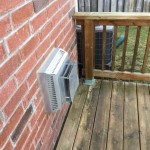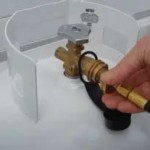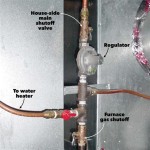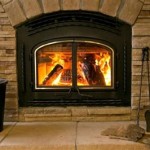TV Over Fireplace: Strategically Positioning the Cable Box
Mounting a television above a fireplace has become a prevalent design choice in modern living spaces. This configuration offers a centralized entertainment hub and can optimize room layout, particularly in smaller areas. However, integrating the supplementary components, most notably the cable box, presents a unique challenge. The visibility and accessibility of the cable box must be carefully considered to maintain a clean aesthetic and functional setup.
The inherent issue arises from the desire to conceal the cable box and its associated wiring while ensuring it continues to receive the necessary infrared signals for remote control operation. An exposed cable box can detract from the overall visual appeal of the installation, while improper placement can hinder functionality, rendering the remote control ineffective. Therefore, a strategic approach to cable box placement is crucial for a successful TV-over-fireplace arrangement.
Understanding the Challenges of Cable Box Placement
Several factors complicate the seemingly simple task of finding an ideal location for the cable box. These challenges stem from a blend of technological limitations, aesthetic preferences, and practical constraints. Addressing these issues proactively is essential to achieving a seamless and user-friendly entertainment experience.
One primary concern is the line-of-sight requirement for traditional infrared (IR) remote controls. The cable box needs to be within direct view of the remote for signals to be reliably received. Obstructing this line of sight by placing the cable box inside a cabinet, behind the television, or within a closed compartment will generally render the remote control useless.
Another significant factor is heat management. Fireplaces generate substantial heat, which can negatively impact the performance and lifespan of electronic devices, including cable boxes. Placing the cable box too close to the fireplace or within an enclosed space that traps heat can lead to overheating, malfunctions, and reduced operational efficiency. Adequate ventilation is paramount to prevent these issues.
Aesthetic considerations also play a vital role in the decision-making process. Homeowners typically desire a clean, uncluttered look, minimizing the visibility of cables, boxes, and other electronic components. Balancing this aesthetic goal with the functional requirements of the cable box requires careful planning and execution.
Finally, accessibility for maintenance and troubleshooting is crucial. The cable box may occasionally require resetting, reconnecting, or physical inspection. Hiding the box in a difficult-to-reach location can complicate these routine tasks and potentially necessitate dismantling part of the installation for access.
Exploring Placement Options and Solutions
Various solutions exist for strategically positioning the cable box in a TV-over-fireplace setup. Each option offers a unique blend of advantages and disadvantages, and the optimal choice will depend on the specific constraints of the room, the design preferences of the homeowner, and the technical requirements of the equipment.
One approach involves concealing the cable box within a purpose-built media cabinet or shelving unit located adjacent to the fireplace. This option allows for a clean, organized appearance while providing ample space for other media components. However, it is essential to ensure adequate ventilation within the cabinet to prevent overheating. Furthermore, an IR repeater system may be required to extend the remote control signal to the cable box if it is completely enclosed.
Another possibility is to mount the cable box behind the television screen, utilizing a specialized mounting bracket designed to accommodate the device. This solution minimizes the visibility of the cable box but can present challenges in terms of heat management and accessibility. Careful consideration must be given to ventilation, and a tiltable or articulating TV mount may be necessary to facilitate access for maintenance.
A more unconventional approach involves using an IR extender or repeater system. These devices consist of an IR receiver placed in direct view of the remote control and a separate IR transmitter positioned near the cable box. The receiver captures the remote control signal and relays it to the transmitter, which then sends the signal to the cable box. This allows the cable box to be hidden out of sight, provided the IR transmitter is within range. However, IR extenders can sometimes be prone to interference and may require careful placement to ensure reliable operation.
For some installations, particularly those with pre-existing wiring and limited flexibility, the best option may be to simply place the cable box on a shelf or console table below the television. While this approach does not fully conceal the device, it offers easy access and ensures reliable remote control operation. Careful cable management can help minimize the visual clutter and create a more organized appearance.
Integrating Technology for Improved Control and Aesthetics
Advancements in home entertainment technology have introduced solutions aimed at simplifying control and enhancing the aesthetic appeal of TV-over-fireplace installations. These technologies offer alternatives to traditional IR remote controls and can help mitigate the challenges associated with cable box placement.
Radio frequency (RF) remote controls offer a significant advantage over traditional IR remotes in that they do not require a direct line of sight to operate. RF remotes transmit signals via radio waves, allowing the cable box to be hidden out of sight without compromising functionality. However, it is important to ensure that the cable box is compatible with RF remote control technology. Some cable providers offer RF remotes as part of their standard service, while others may require a separate adapter or upgrade.
Universal remote controls offer the ability to control multiple devices, including the television, cable box, and other media components, from a single remote. Many universal remotes support both IR and RF communication, providing flexibility in terms of device placement. Some advanced universal remotes can even be programmed to learn the commands from existing remotes, simplifying the setup process.
Smart home automation systems can also be integrated to control the cable box and other entertainment devices. These systems typically use a central hub to communicate with various devices via Wi-Fi or other wireless protocols. This allows for control via smartphone apps, voice commands, or automated routines. Integrating the cable box with a smart home system can eliminate the need for a traditional remote control altogether and provide a seamless, integrated entertainment experience.
HDMI-CEC (Consumer Electronics Control) is another technology that can simplify control of multiple devices connected via HDMI. HDMI-CEC allows devices to communicate with each other, enabling features such as one-touch play and automatic input switching. If the television and cable box both support HDMI-CEC, it may be possible to control the cable box using the television’s remote control, further reducing the need for a separate remote.
Finally, wireless HDMI transmitters offer a solution for eliminating the need for physical HDMI cables between the cable box and the television. These devices transmit video and audio signals wirelessly, allowing the cable box to be placed in a separate location without running cables through walls or floors. Wireless HDMI transmitters can be particularly useful in situations where it is difficult or impossible to run cables directly between the cable box and the television.
The selection of the optimal cable box placement strategy requires a comprehensive evaluation of the available space, desired aesthetic, technological capabilities, and budget constraints. Consulting with a professional installer can offer valuable insights and ensure a seamless and functional integration of the cable box within the TV-over-fireplace setup. They can assess the specific needs of the installation and recommend the most appropriate solutions, considering factors such as heat management, remote control compatibility, and cable management.

How To Hide The Cable Box Tv Cords Wires

How To Hide The Cable Box

Tv Wall Mount Installation With Wire Concealment Over Fireplace

How To Hide The Cable Box

Where To Put Cable Box With Tv Over Fireplace For Stereo Dvd Player Game System And Flat Panel Wall Mounted Above

Tv Wall Mount Installation With Wire Concealment Over Fireplace

Stylish Tv Above Fireplace With Cable Box

Over Mantle Cabinet For Tv Components How To

Tv Wall Mount Installation With Wire Concealment Over Fireplace

How To Mount A Tv Over Brick Fireplace And Hide The Wires Designing Vibes Interior Design Diy Lifestyle
Related Posts








